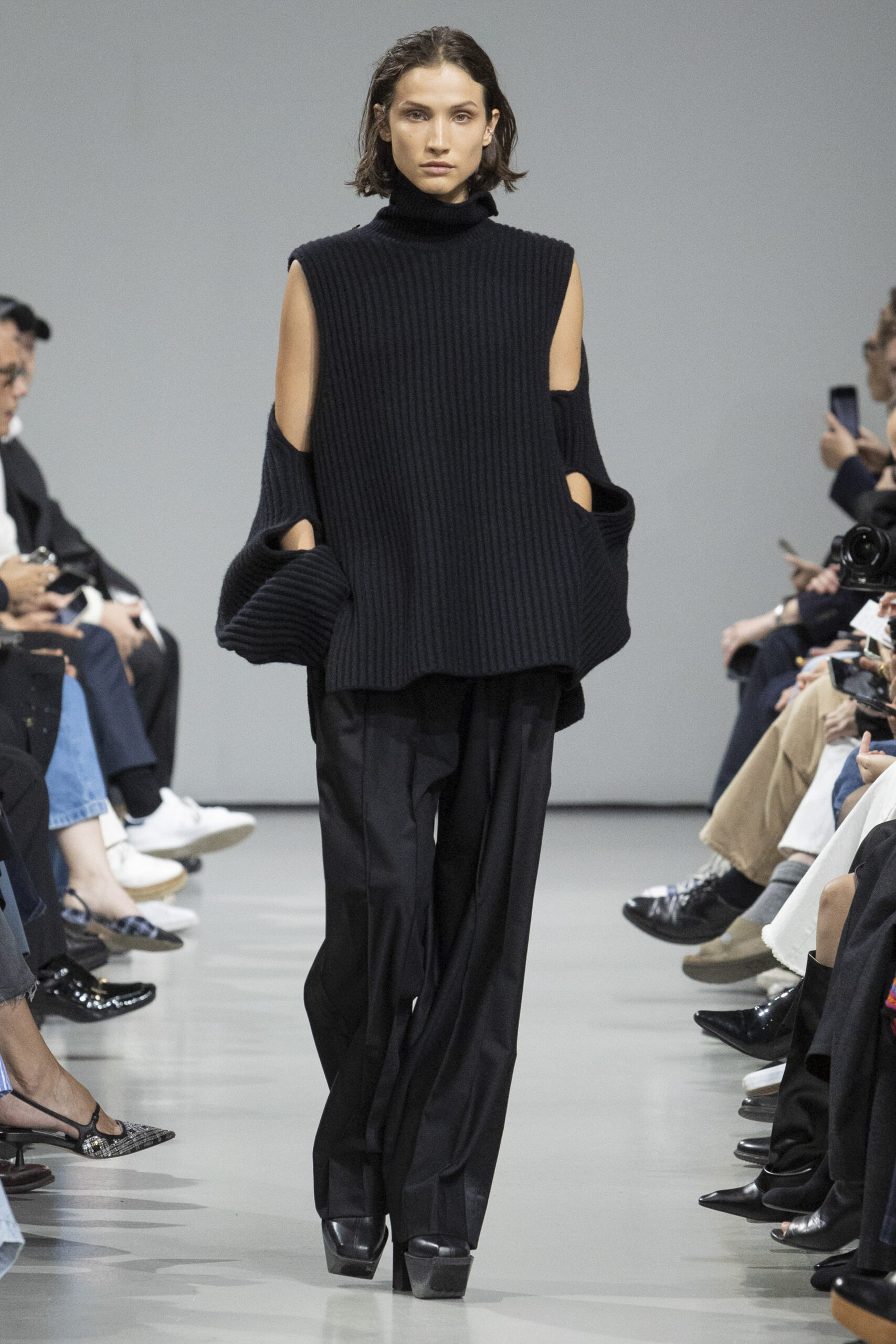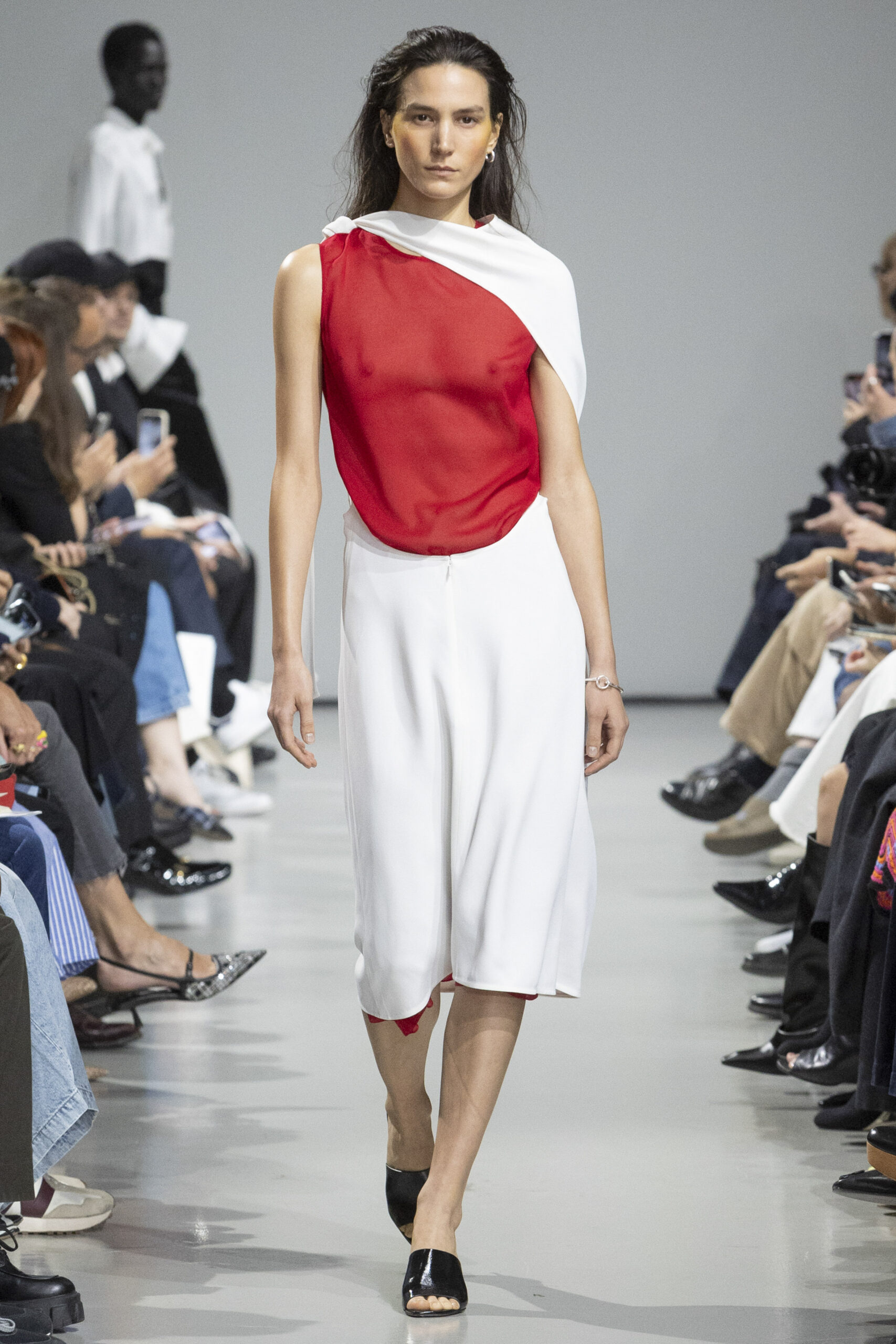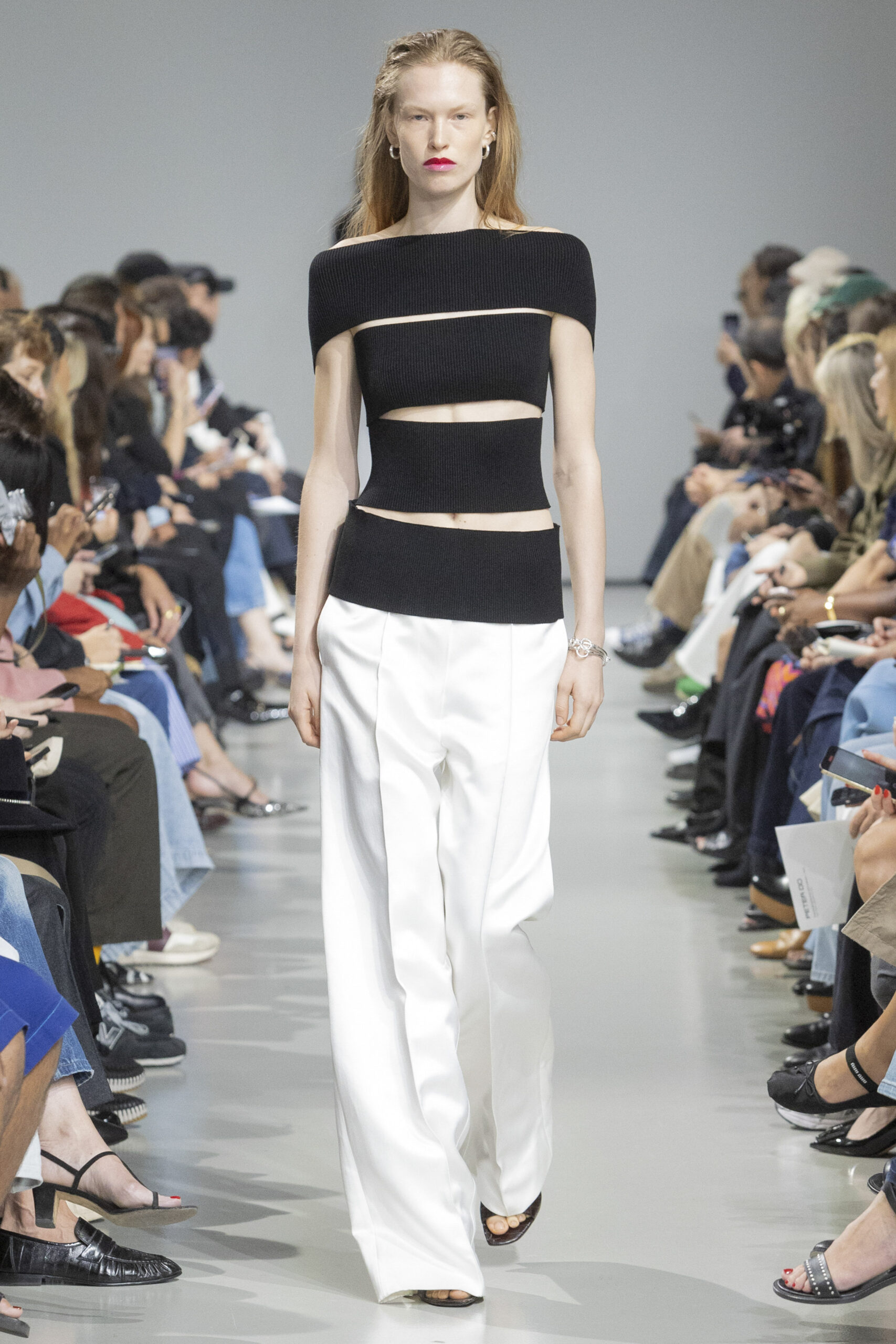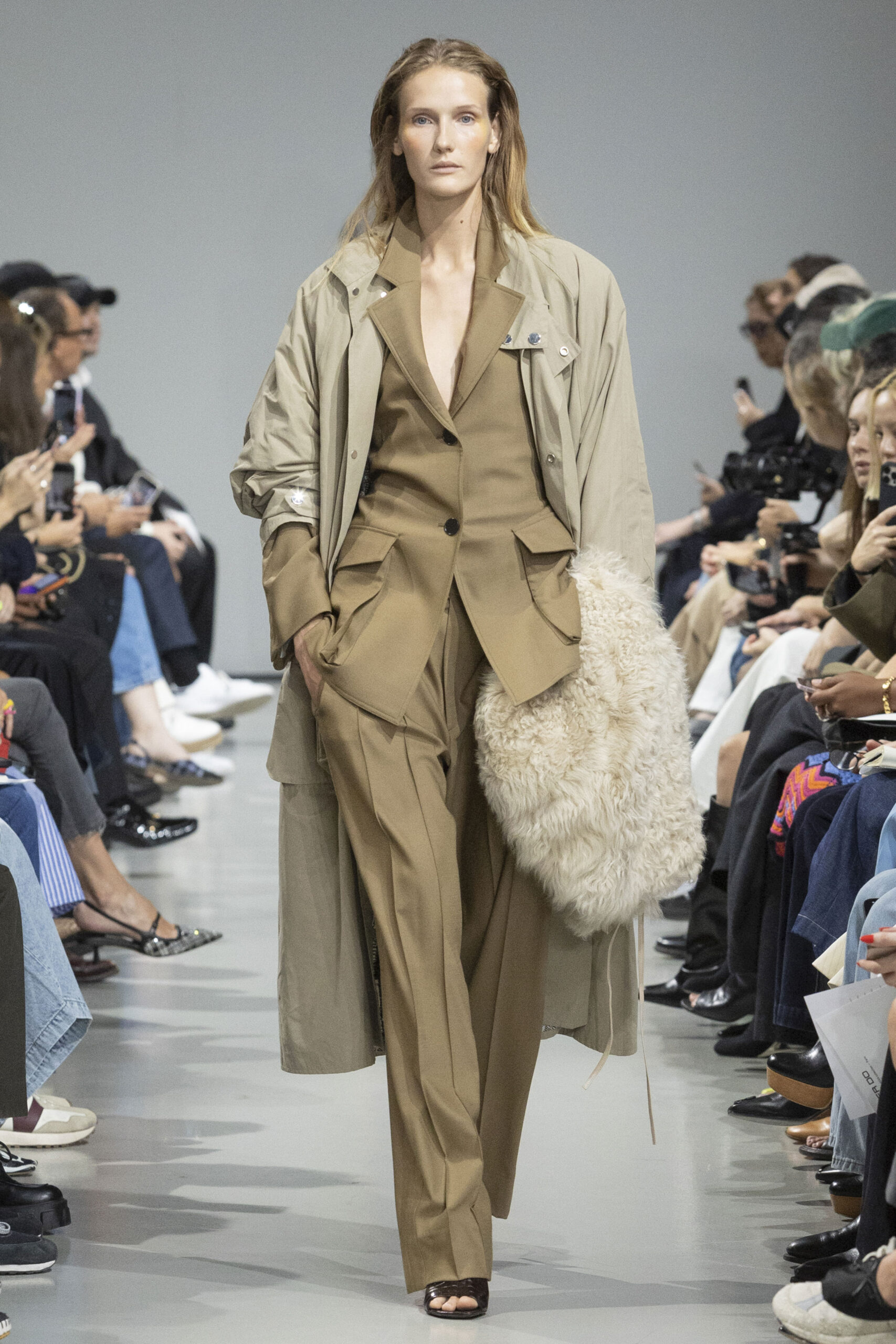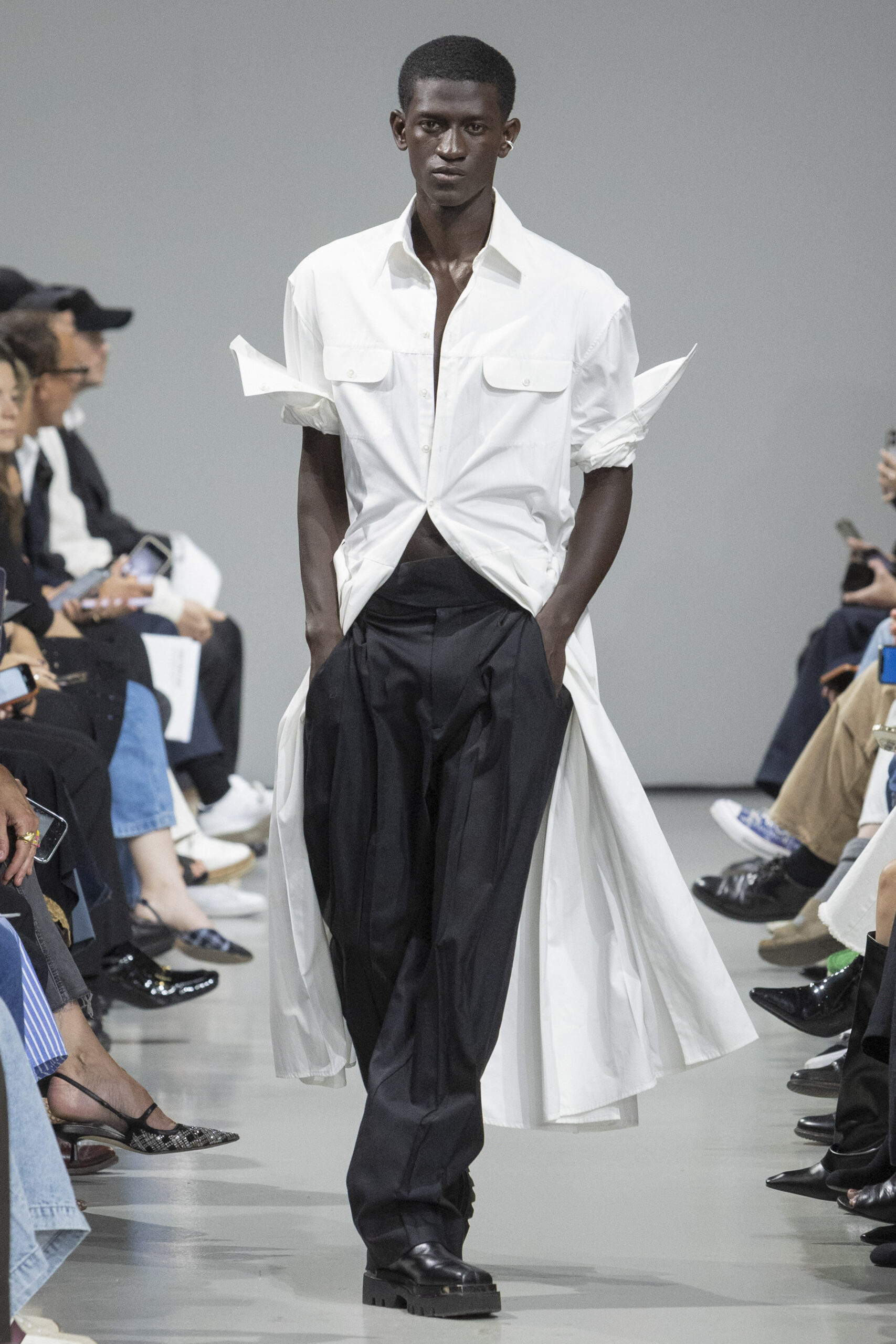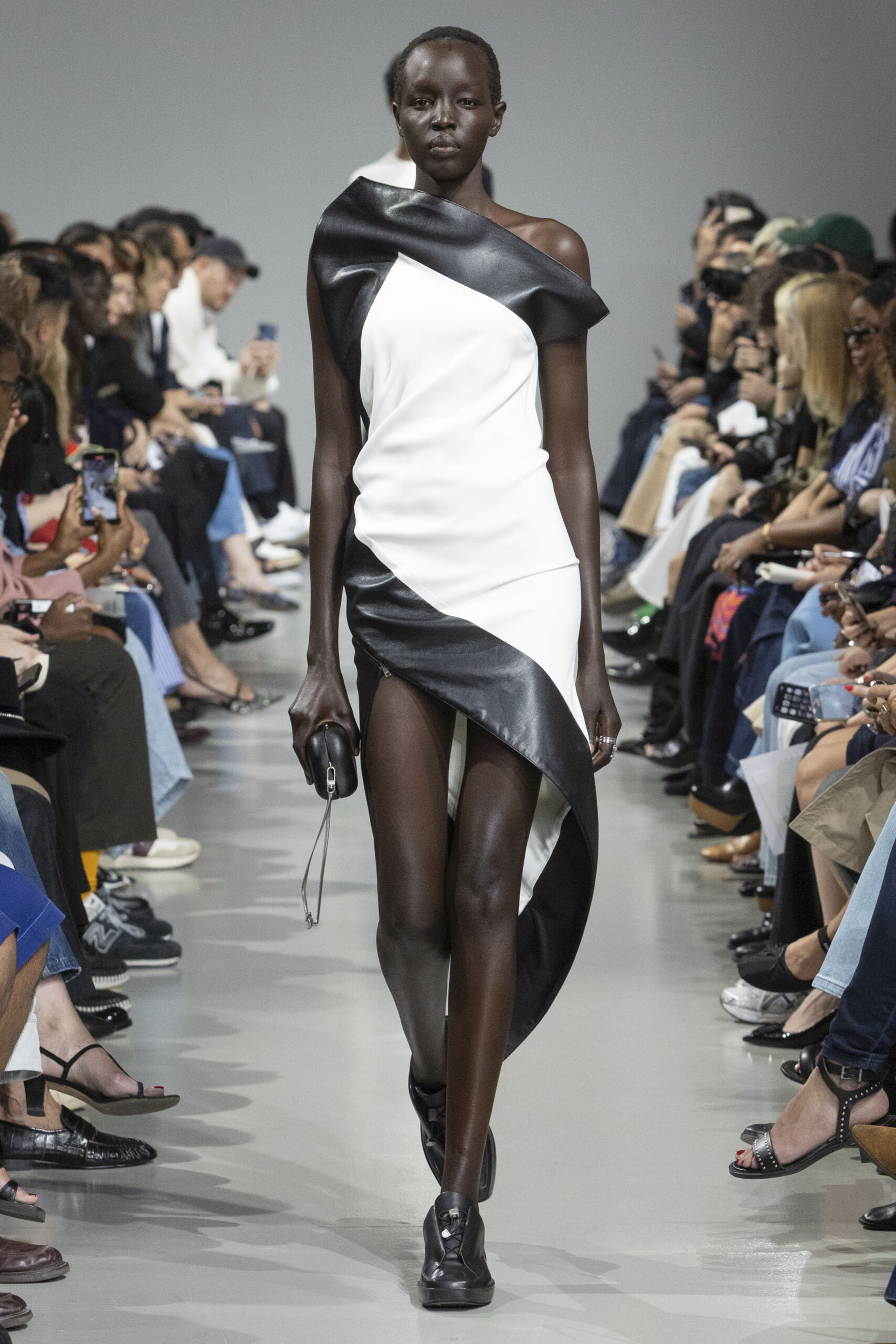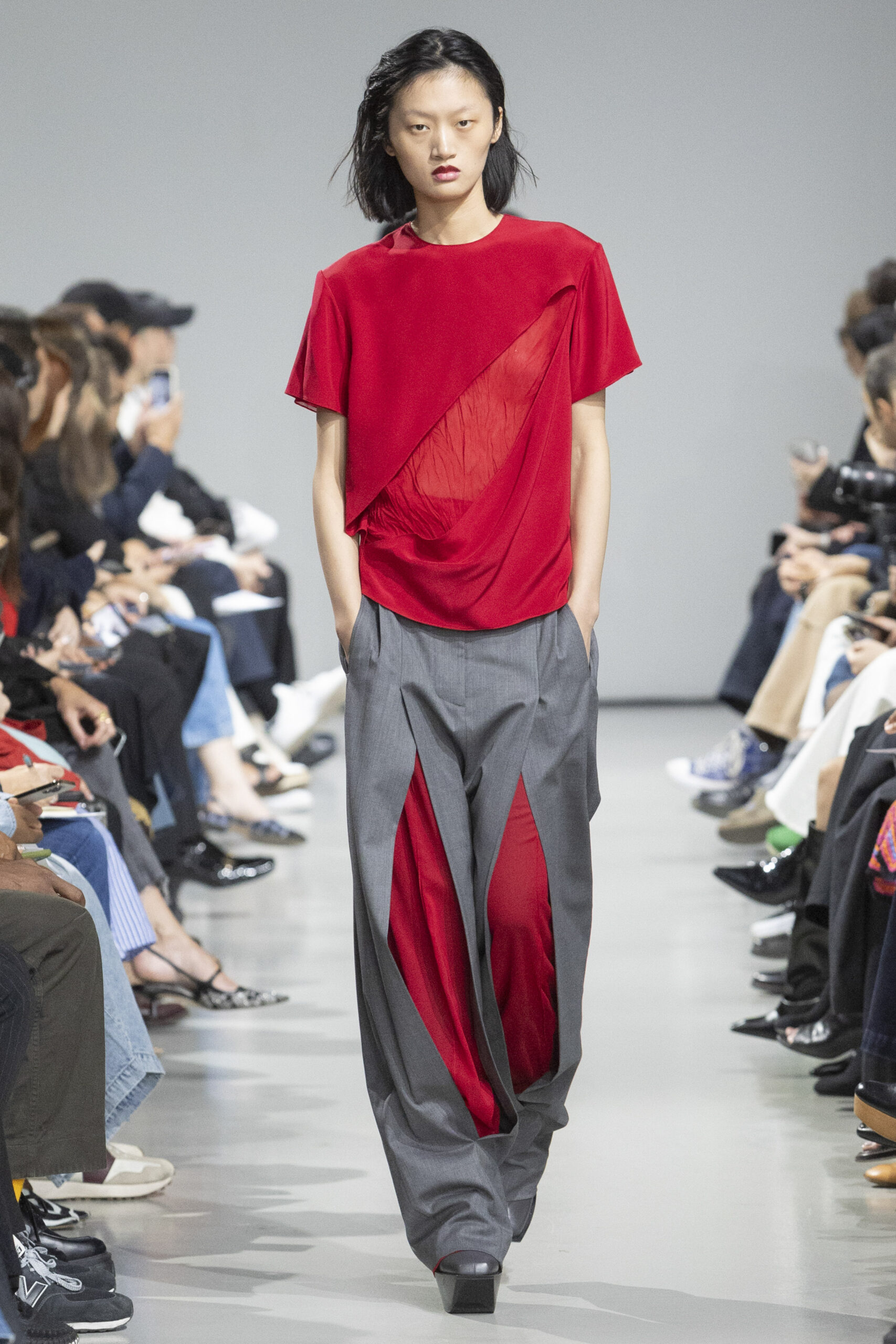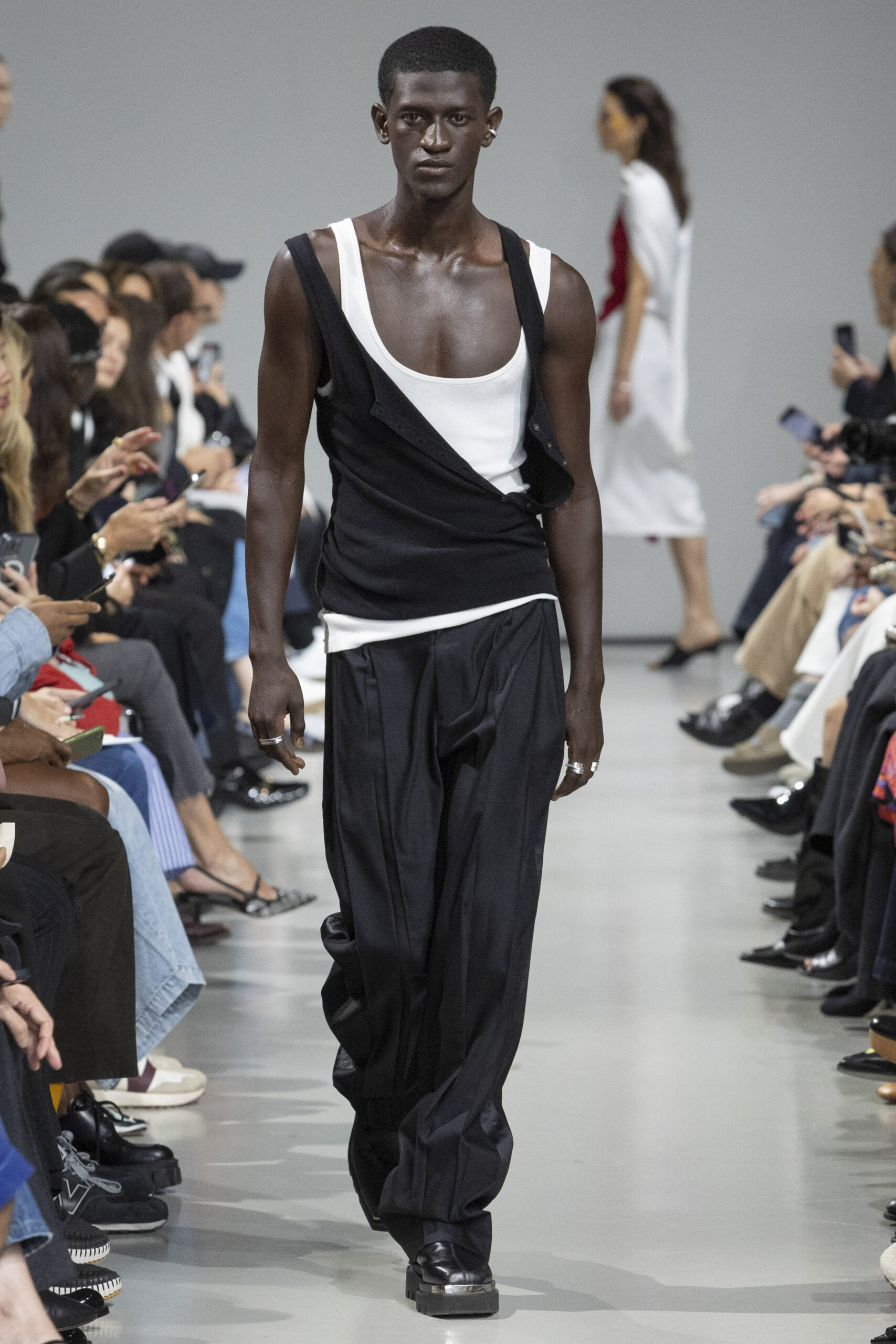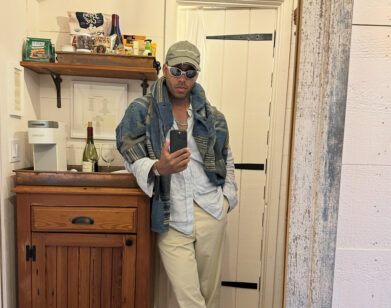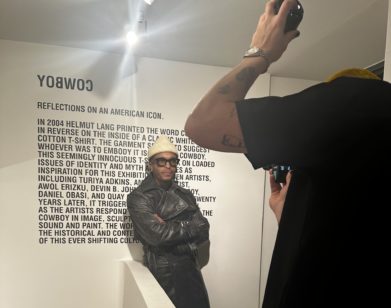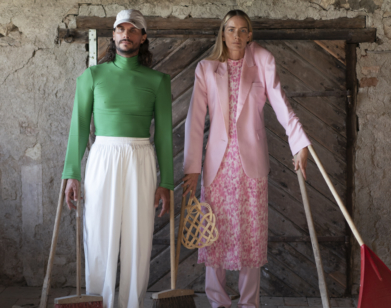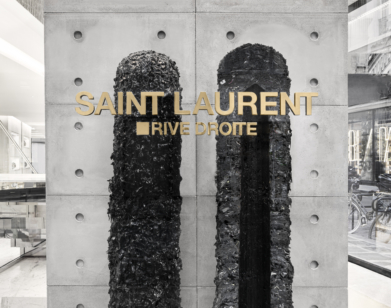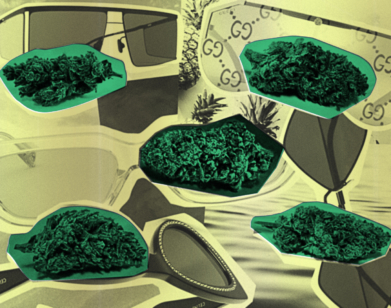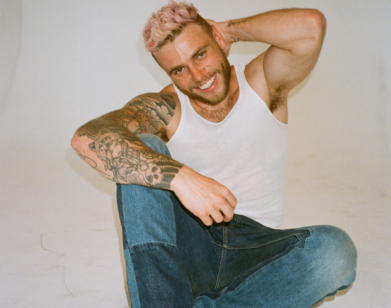collab
Peter Do Goes Bananas For America’s Favorite Brand
Peter Do is having his buzziest year yet. Just after showing his debut collection at Helmut Lang, the Vietnamese-American designer known for whimsical, hyper-wearable black-and-white tailoring took on a more democratic pursuit: a collaboration with America’s favorite aspirational brand, Banana Republic. To usher in the belle epoque of Banana, Do and BR’s Sam Schler tells us how he dug through basement archives and weathered catalogs to leave his fingerprint on the heritage retailer—and make his mom proud in the process.
———
MEKALA RAJAGOPAL: How are you? Congratulations on the collection, and all of the collections.
PETER DO: Thank you. There’s just so many collections at this point.
RAJAGOPAL: I know. How was it working on three different collections at once?
DO: It was chaos, for sure. [Laughs] I’ve worked on the Banana Republic project for a while now, and luckily we’ve been working on my own collection for a bit as well. Then the Helmut Lang came along and it felt like an impossible timeline. People love squeezing everything into fashion month, so that’s why everything came out at the same time.
RAJAGOPAL: How did you choose to differentiate this one from your own?
DO: We designed the collection the same way, there’s just a lot more research from the BR archive involved. I went to the archive with Sam in Tribeca, and we also went through all the catalogs archived in SF when I was there, which was really fun. I really enjoyed that part, but it’s the same process of sketching, then we just flew back and forth to do the samples and the BR team took it away.
RAJAGOPAL: What are the archives in Tribeca like? Is it like a warehouse? I’m curious.
DO: No, it’s in the basement of the Gap building. It’s really nice, actually. It’s very organized. There’s an archivist there. Sam can probably speak to it more.
SAMUEL SCHLER: We have it organized by eras so the team was able to scour everything and pull pieces that resonated with them, and that was the foundation for the collection. If you want to come, I’d be happy to show you.
DO: And we did styling sessions to see what works. The pieces that spoke to us felt really current, which is a lot of the original archive pieces from the BR catalog. They’re quite timeless.
RAJAGOPAL: That sounds fun. And I also feel like a lot of these types of lines feel like a diluted version of the main line, but I love that this collection is very considered and raw and interesting in its own regard.
DO: The conversations never started with, “How can we show our logos on the garment?” There actually isn’t a single visible logo on any garment. We wanted the clothes to speak for themselves and we don’t want to rely on some sort of signifier to sell the clothes.
RAJAGOPAL: I’m assuming that you’ve passed on collaborations in the past, so what made you choose this one?
DO: It just felt like the right time and the right opportunity. I didn’t want to sacrifice quality and integrity and, with BR, we wanted to keep the same spirit and quality that PD has, but the price is much more democratic. And to introduce PD to BR’s audience and BR to the people that are buying PD right now. There are people that tell me they haven’t stepped foot into the BR store in a very long time, me included. I haven’t thought about BR for a while, but going into the store, I was very surprised about the rebranding and the new evolution of BR.
RAJAGOPAL: What’s your earliest memory of BR?
DO: When I first moved to the US, going to the mall and shopping with my mom. That’s where I first learned about BR.
RAJAGOPAL: Did your mom ever shop there?
DO: My mom used to go in, but we couldn’t really afford anything. My mom was a single mother with two kids, so for her, it was only if it was on sale and made sense. BR is still on the higher end of the mall situation and it was always out of our price range, so I’m really happy now that I can send her the new pieces.
RAJAGOPAL: Totally. I have the same experience. How does your mom feel about it now?
DO: She’s really proud. I don’t think my mom fully understands what I do or what this means, but she’s always proud.
RAJAGOPAL: It probably feels closer to home for her when you told her about this collab versus a Helmut Lang appointment.
DO: She still doesn’t understand what a collaboration means. She’s like, “Do you work for them?” I’m like, in a way.
RAJAGOPAL: They work for me.
DO: [Laughs] We work together, mom. She’s like, “Do they pay you?” My mom asked questions like that when I got the job at Celine, too. She loves clothes, but she doesn’t really care about fashion, per se.
RAJAGOPAL: I think with immigrant parents there can sometimes be a worry that you’re not going to make money from doing something creative.
DO: Yeah, for sure. For the longest time she was always worried. I don’t know, there’s a whole world that I didn’t know about. All the BR fans and archivists, all the catalogs. When they used to send out mail-order catalogs and then you select your items, you send it in and the clothes come.
RAJAGOPAL: You mentioned archivists. Are there crazy BR archivists the way there are for other brands?
DO: Sam can speak to this as well.
SCHLER: Yeah, we have a couple of encyclopedia people that know everything about BR. They can literally look at a label and be like, “This is in ‘73 when Patricia [Ziegler] went to this place,” or look at a button and be like, “That’s the ‘85 button.” And we have fans that just have private collections of BR. So, just like most iconic brands, people go crazy about the vintage pieces.
DO: Yeah. It’s like a thing. [Laughs] It’s wild.
RAJAGOPAL: Another aspect of the collection that’s interesting is how modular and multi-purpose the garments are. What was the thinking behind that?
DO: I always think about growing up in Vietnam where you own very little clothes. Everything you own, you take care of it and wear it to death and you pass it down. That’s the mentality I grew up with. So when we design clothes, I always think of it in terms of value and designing something that people can wear in multiple ways. There’s a sense of play and dialogue that the customer can have with their wardrobe in the morning. Like, you can turn it inside out and the sleeve comes off and you can scrunch it up and you can layer it. It encourages people to wear their clothes more and find new ways to wear things they own. You don’t have to constantly seek out newness. There’s a constant exhaustion of trends and newness and we’re all guilty of being a part of that cycle of pumping out new things all the time. But I’m definitely an outfit repeater.
RAJAGOPAL: What outfit are you repeating this fall and winter?
DO: The same clothes I always wear. I’ve been wearing turtlenecks for years. And I have a whole new BR fall wardrobe from this collaboration.
RAJAGOPAL: Very CEO Steve Jobs.
DO: [Laughs] Turtleneck à la Steve Jobs, but I like when a turtleneck is outerwear and less of an inner layer piece.
RAJAGOPAL: Speaking of the fashion cycle, it’s always been retrospective, but especially now. Is there any era that you feel most inspired by in the past?
DO: Not really. I feel like there’s always something problematic about each era of fashion. I do miss the time where fashion was a lot freer. Maybe the business wasn’t doing so great, but it felt like there was more freedom in terms of creativity and pushing boundaries. Maybe there was a time in fashion where things were smaller and things were new. It feels like there’s just so much right now.
RAJAGOPAL: There’s too much.
DO: There’s so many brands and so much clothes and I don’t know how I feel about that. And there was a time where it feels like fashion was not fussy. I like to think of myself as an apparel designer and not a fashion designer with a capital F. Making clothes that can be in your life for a long time, and less about, “This is the silhouette that I’m pushing this season.”
RAJAGOPAL: That’s a great distinction because the word apparel has the suggestion that you’re wearing it all the time. It must have been great to revisit the catalog archive and remember the time when people would buy like one thing in a catalog per month. It’s crazy how we shop now.
DO: Yeah. Now you can just shop on your phone at 2 AM. It’s never-ending.
RAJAGOPAL: Obviously, you were always cool to an in-group, but now a broader audience is seeing much more of your work. How does that feel?
DO: Exposed, maybe? [Laughs] I feel like we went quiet for a long time and now that all these projects have come out—maybe I need to pace myself better next time. But Sam sent me photos of people lining up outside the BR store in Japan and I feel really touched by that. People are engaging and I feel very touched by the feedback from customers who want to wear the clothes.
RAJAGOPAL: The last and most important question I have is, what is your favorite thing to do with a banana?
DO: I don’t even like bananas that much.
SCHLER: Sketch it on a sweater.
DO: Yeah. I prefer to sketch it. I feel like the sketch we did for BR adds a cheekiness to the collection, because the pieces were very serious.
RAJAGOPAL: Amazing. Thanks for making the time.
DO: Thank you.

